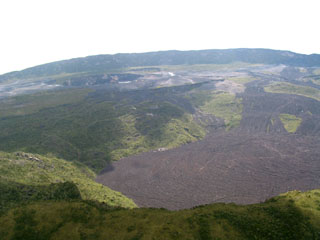Report on Nyamulagira (DR Congo) — 8 March-14 March 2023
Smithsonian Institution / US Geological Survey
Weekly Volcanic Activity Report, 8 March-14 March 2023
Managing Editor: Sally Sennert.
Please cite this report as:
Global Volcanism Program, 2023. Report on Nyamulagira (DR Congo) (Sennert, S, ed.). Weekly Volcanic Activity Report, 8 March-14 March 2023. Smithsonian Institution and US Geological Survey.
Nyamulagira
DR Congo
1.408°S, 29.2°E; summit elev. 3058 m
All times are local (unless otherwise noted)
The Observatoire Volcanologique de Goma (OVG) reported increased activity at Nyamulagira on 13 March. Seismicity indicated magma movement at shallow depths towards the central part of the crater and incandescence above the crater rim was visible beginning at around 1800. The Toulouse VAAC reported at 1130 on 14 March that lava fountains were observed, and an eruption plume rose 1.5 km above the crater rim, based on information from OVG. The VAAC noted that the plume was not identified in satellite images due to weather cloud cover.
Geological Summary. Africa's most active volcano, Nyamulagira (also known as Nyamuragira), is a massive high-potassium basaltic shield about 25 km N of Lake Kivu and 13 km NNW of the steep-sided Nyiragongo volcano. The summit is truncated by a small 2 x 2.3 km caldera that has walls up to about 100 m high. Documented eruptions have occurred within the summit caldera, as well as from the numerous flank fissures and cinder cones. A lava lake in the summit crater, active since at least 1921, drained in 1938, at the time of a major flank eruption. Recent lava flows extend down the flanks more than 30 km from the summit as far as Lake Kivu; extensive lava flows from this volcano have covered 1,500 km2 of the western branch of the East African Rift.
Sources: Observatoire Volcanologique de Goma (OVG), Toulouse Volcanic Ash Advisory Centre (VAAC)

